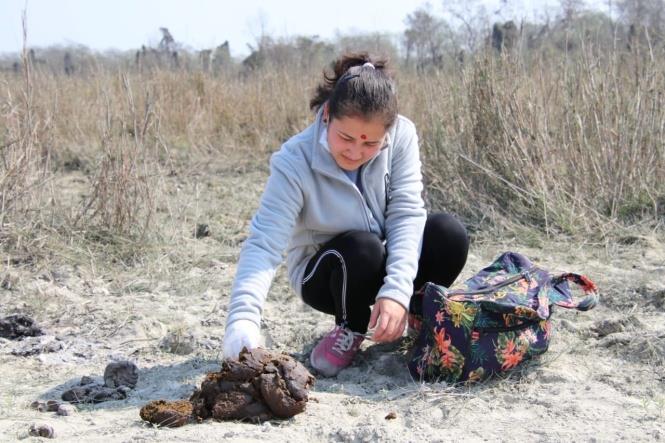Divya Bhattarai
Koshi Tappu Wildlife Reserve is the sole natural habitat of endangered wild water buffalo in Nepal. Illegal grazing of livestock (cow, buffalo) and prominence of invasive species in the reserve have reduced the forage availability and diversity. The food scarcity has forced wild buffalo to raid crops. This kind of conflict has been generating negative perceptions on wild buffalo to the local residents. Also, there is a lack of robust scientific information. Therefore, the dietary overlap of wild buffalo with livestock will be assessed through dung analysis; impacts of invasive species on plant diversity will be assessed through biodiversity indices, and the conflict with humans will be assessed through questionnaire survey. Further, community sensitization and mobilisation on wild buffalo conservation is a major aspect of this project. The project is expected to bring out significant data on conflict which will help to update the management plan of the reserve.

Cases of human-wild buffalo conflict are reported from Koshi Tappu Wildlife Reserve (KTWR), Nepal. Wild buffalo is a ruminant and has a critical role in managing grasslands of the Wildlife Reserve. The population of wild buffalo is increasing while the carrying capacity of the reserve is the same. Illegal grazing of livestock (cow, buffalo) in reserve and prominence of invasive species has reduced the forage availability and diversity. This has created food scarcity for wild buffalo forcing them to visit farmlands and raid crops, thereby fulfilling their dietary requirements. This kind of conflict has been generating negative perceptions on wild buffalo to the local residents. The latest management plan of KTWR has listed invasive species, feral cattle and illegal livestock grazing and conflict of wild buffalo with humans as major challenges of the reserve. However, there is a lack of robust scientific information regarding the impacts of invasive species on plant diversity, the dietary overlap of wild buffalo with livestock for forage, and human-wild buffalo conflict; the knowledge gap which this project aims to fulfil. In addition, awareness-raising programs and activities will be held to aware concerned stakeholders and local people about the need of wild buffalo conservation, and the critical ecological role of the species.
The dietary overlap of wild buffalo with livestock will be assessed through dung analysis; impacts of invasive species on wild buffalo habitat species will be assessed from biodiversity indices, and the conflict with humans will be assessed through questionnaire survey. A permanent community learning and information centre (CLIC) will be established in the community school, and conservation materials related to wild buffalo will be provided to the CLIC. Due to the increased level of awareness in the community, local people are expected to feel discouraged to graze cattle in reserve and look for other sustainable options.